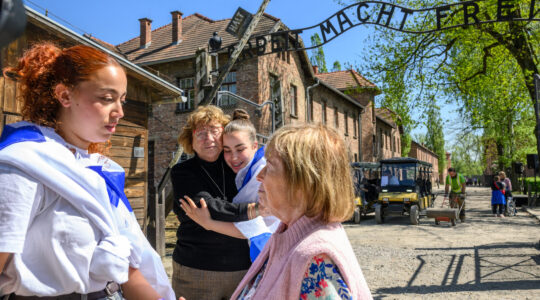Shortly after 10:00 on Wednesday, I set out for one of Mexico City’s three Yiddish schools — so-called because they retain a significant amount of Yiddish language and culture in the curriculum. My appointment was at 11, and an hour later we were still driving — first past Polanco, the more urban Jewish area where the most observant live, then towards Interlomas, a noticeably tonier suburb with a Hummer dealership and a massive Walmart. The Nissan dealership even sported a sign wishing passers-by a Shana Tovah. And still we kept going.
Mexico City is, quite simply, enormous. Maybe denizens of Los Angeles or Atlanta or Houston are familiar with this kind of endless, car-dependent sprawl, but Mexico City dwarfs them all. As we got closer to the school, the Naye Yiddish Shul, the residences turned from fortified mini-mansions to Miami-style high-rises, one after another, sprouting from the hillsides in apparent defiance of the laws of physics. It’s a world away from the hectic density of the city — economically, geographically, even spiritually — and it’s not hard to see why some feel quite cut off.
That evening, I had dinner with two young Jews who feel just that way. Alan Grabinsky and Paul Feldman are both smart young twenty-somethings, active in the Mexican branch of the Jewish Salons project, and soon to be the first two residents of Moishe House Mexico City, a network of residences where young Jews live and organize programming for others like them (they are looking for a third, by the way, so if you know of anyone …)
Over tea and crepes at one of Condesa’s many sidewalk cafes, within spitting distance of the Albert Einstein statue in Parque Mexico, Grabinksy and Feldman gave me an earful about the "shtetl mentality" that prevails in the outlying Jewish suburbs: the fear of what lies beyond the razor-topped walls, the insularity, the lack of intellectual curiosity, and on and on. Many young people want to branch out, they say, but are hesitant because of a range of social and cultural inhibitions.
I’ll have more on my conversation with Grabinsky and Feldman later. But for now, check out this short segment I filmed at the Yiddish school. Does it look like a shtetl to you?
JTA has documented Jewish history in real-time for over a century. Keep our journalism strong by joining us in supporting independent, award-winning reporting.





